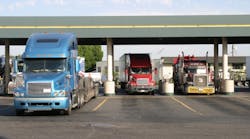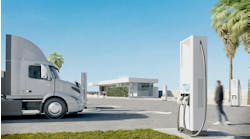The average price of diesel cracked the $3 per gallon mark in the U.S. this week, with prices for both diesel and gasoline increasing in almost every region of the country as well.
According to data tracked by the Energy Information Administration (EIA), the average price for diesel in the U.S. increased 3.2 cents to $3.028 per gallon, which is 44.3 cents per gallon higher compared to the same week in 2017.
Diesel prices increased in every region of the country this week, spiking the most in the Central Atlantic and Gulf Coast; up 5.4 cents to $3.363 per gallon and up 4 cents to $2.825 per gallon, respectively, the agency said.
The average price for gasoline in the U.S. also increased this week, climbing 3.5 cents to $2.557 per gallon, EIA noted. That is 19.9 cents per gallon higher compared to the same period in 2017.
New England is the only region in the nation where gasoline prices declined; dropping 4/10ths of a penny to $2.553 per gallon, the agency said. Gasoline prices also remained unchanged on the West Coast, staying at $3.011 per gallon.
The biggest jump in gasoline prices occurred in the Midwest, which witnessed a 7.9 cent spike to $2.507 per gallon, EIA reported.
The agency added some historical analysis for gasoline prices as well. According to its data, U.S. regular retail gasoline prices averaged $2.41 per gallon (gal) in 2017, 27 cents/gal (13%) higher than in 2016, but two cents/gal less than in 2015, with higher crude oil prices in 2017 contributing to higher gasoline prices.
In three of the 10 cities for which EIA collects weekly retail price data, gasoline prices exceeded $3/gal at least once in 2017, and prices in every city except Houston exceeded $2.50/gal at some point in the year. The landfall of Hurricane Harvey last August also helped push up gasoline prices for 2017 overall, EIA noted. The storm led to refinery and infrastructure outages in the Gulf Coast, which in turn led to increased gasoline prices, particularly along the East Coast and Gulf Coast, the agency said.
EIA added that, since 2013, U.S. gasoline demand has been increasing at an annual average of 1.8% and in 2016 surpassed the previous high it had reached in 2007. The combination of increasing overall gasoline demand, increasing demand for premium gasoline, and the difficulty of increasing ethanol blending beyond the 10% level appear to have contributed to an octane shortage that required refiners and blenders to acquire more expensive sources of octane, causing the price differential between premium and regular gasoline to increase rapidly beginning in 2014 and continuing through last year.
In terms of future fuel prices trends, the agency is currently projecting a “stable” price level for crude oil in 2018 and 2019.
And because crude oil prices are expected to be relatively flat through 2019, U.S. gasoline prices are also expected to remain near current levels. EIA forecasts the U.S. average regular retail gasoline price will average $2.57/gal in 2018 and $2.58/gal in 2019, which is slightly higher than the $2.42/gal average in 2017.
EIA’s January Short-Term Energy Outlook forecasts Brent crude oil to average $60 per barrel (b) in 2018 and $61/b in 2019, slightly higher than the $54/b average in 2017. In both 2018 and 2019, EIA expects total global crude oil production to be slightly greater than global consumption, with U.S. crude oil production increasing more than any other country.



